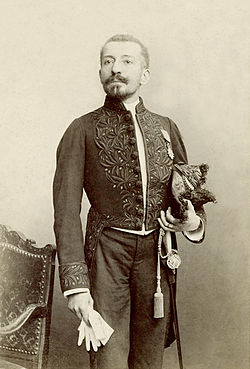-r.jpg) |
| Charles Koechlin |
 |
| Pierre Loti |
More details about the piece can be found at this link.
Here are part 1, part 2, and part 3 of a YouTube offering, which presents the entirety of the orchestral version of the piece.
...Nous arrivons par le bazar des selliers, qui est le plus luxueux de la ville et ressemble à une interminable nef d'église.—Il fut construit à l'époque de la dernière splendeur de Chiraz, au milieu duXVIIIe siècle, par un régent de la Perse appelé Kerim-Khan, qui avait établi sa capitale ici même, ramenant le faste et la prospérité d'autrefois dans ces vieux murs.—C'est une longue avenue, tout en briques d'un gris d'ardoise, très haute de plafond et voûtée en série sans fin de petites coupoles; un peu de lumière y descend par des ogives ajourées; un rayon de soleil quelquefois y tombe comme une flèche d'or, tantôt sur un tapis soyeux et rare, tantôt sur une selle merveilleusement brodée, ou bien sur un groupe de femmes,—toujours fantômes noirs au petit masque blanc,—qui marchandent à voix basse des bouquets de roses. [An extract from Vers Ispahan, by Pierre Loti.]
Below is a piano version of the piece. If you start playing clip 1/16 (part one of sixteen parts), YouTube should automatically load each of the movements in succession. Click on the YouTube logo in the lower right corner to watch the clip directly in YouTube, rather than in this blog. Please note that these clips were posted by someone calling himself 'On the Top of Damavand,' yielding
 |
| Mount Damavand |
No comments:
Post a Comment